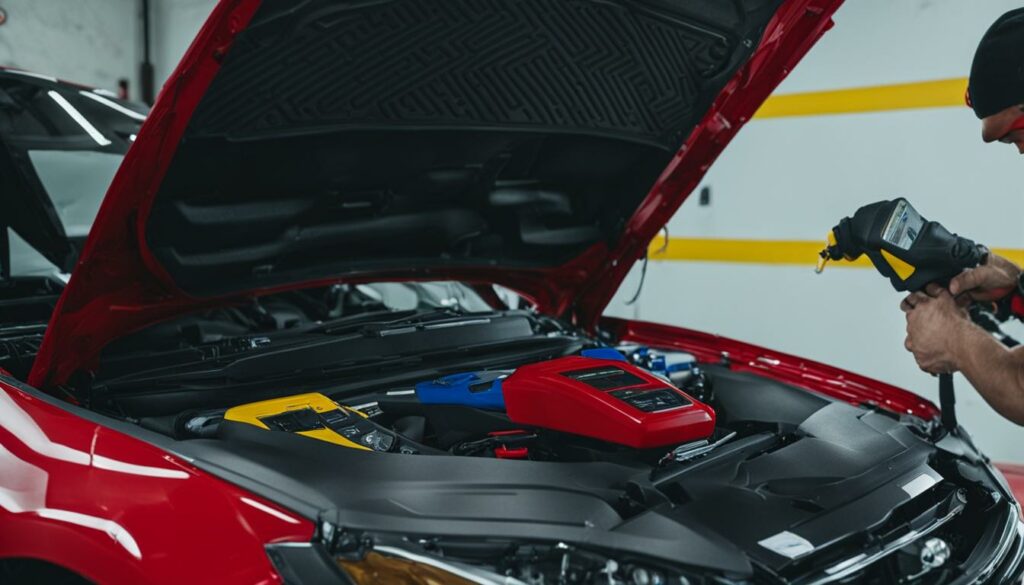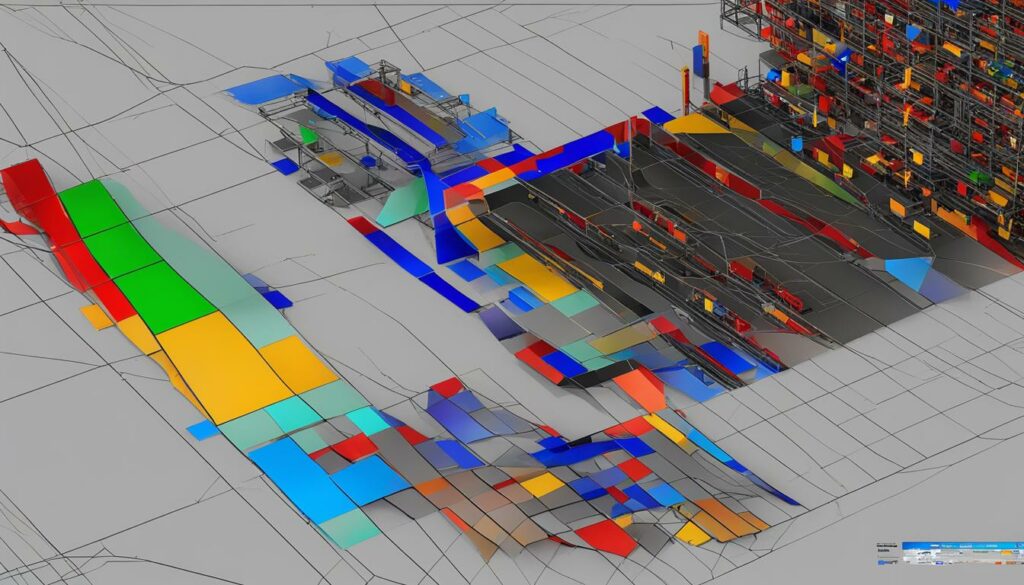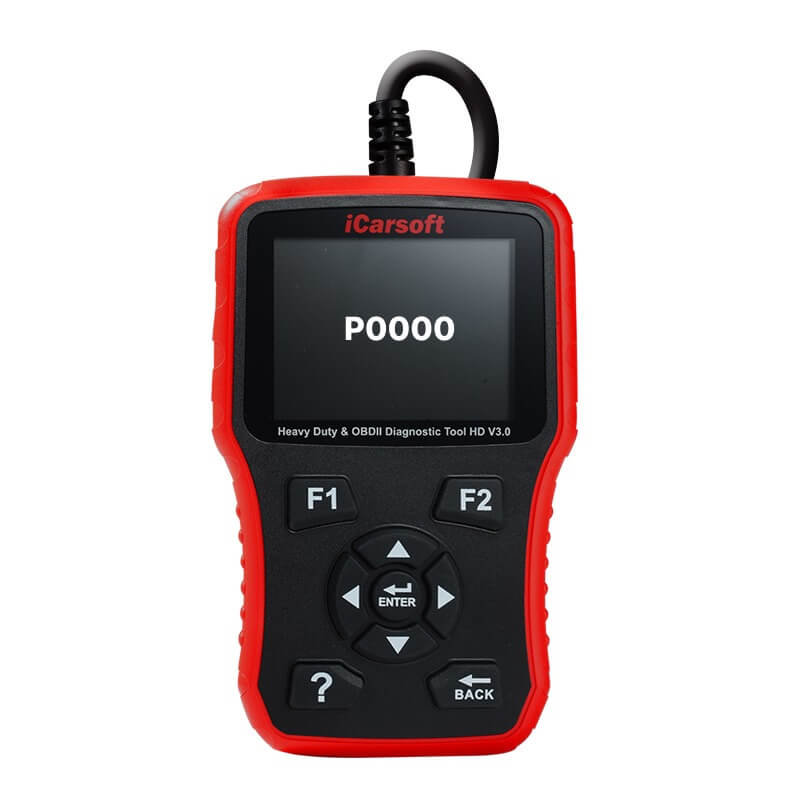P0000 – ISO-SAE Reserved: A Code with No Valid Description
POSTED IN pcodes
If you’ve come across the P0000 code while troubleshooting your vehicle, you may be wondering about its meaning and significance. This code falls under the category of ISO-SAE reserved codes, which are identifiers that do not have a valid diagnostic description. In other words, the P0000 code is not a recognized and specific diagnostic trouble code.
The P0000 code does not display on many code reading devices and does not fall under the category of generic powertrain codes. It is not associated with any specific symptoms or performance issues. Instead, it may appear due to the use of a cheaper or less capable scan tool that may not accurately read the codes or a scan tool that does not support your specific vehicle.
While the P0000 code itself does not cause any symptoms, it’s essential to ensure that all other trouble codes are diagnosed and addressed before focusing on this code. If the code persists or if you experience other symptoms, it’s advisable to use a more advanced scan tool for further diagnosis. Repairing any other trouble codes should be prioritized before addressing the P0000 code.
Key Takeaways:
- The P0000 code is an ISO-SAE reserved code with no valid diagnostic description.
- This code does not cause any specific symptoms or performance issues in your vehicle.
- Possible causes of the P0000 code include the use of a cheaper or incompatible scan tool.
- If the code persists or if other symptoms are present, it’s recommended to use a more advanced scan tool for further diagnosis.
- Repairing other trouble codes should be prioritized before addressing the P0000 code.
ISO-SAE Reserved Description
The ISO-SAE reserved code, P0000, does not have a valid description. It is not a recognized diagnostic trouble code and may not be displayed by all code reading devices. Although it starts with P00 like other P00xx codes, it falls outside the category of generic powertrain codes. Some code readers may display a P0000 code with descriptions such as “No Self Diagnostic Failure Indicated”, “No Diagnostic Trouble Codes Found”, or “Unknown”.
It is important to note that this code does not cause any symptoms, and the Malfunction Indicator Lamp may or may not be illuminated.
Buy tested tuning file for Adblue / EGR / DPF / Adblue off now!
| ISO-SAE Reserved Code | ISO-SAE Reserved Identifier | ISO-SAE Reserved | ISO-SAE Reserved Definition | ISO-SAE Reserved Meaning |
|---|---|---|---|---|
| P0000 | Not applicable | Not applicable | Not applicable | Not applicable |
Symptoms of P0000 Code
The P0000 code itself does not cause any symptoms in your vehicle. However, it’s important to note that there may be symptoms related to other trouble codes present. Therefore, it is crucial to diagnose and address any other codes before focusing on the P0000 code.
The presence of the P0000 code does not indicate specific issues or malfunctions with your vehicle. As a result, it does not have any direct effects or consequences. It is simply an ISO-SAE reserved identifier that does not carry any diagnostic information.
Depending on the specific circumstances, the Malfunction Indicator Lamp (MIL) may or may not be illuminated when the P0000 code is present. The absence of symptoms and the potential lack of MIL illumination contribute to the challenge of interpreting this code.
It’s important to seek professional help from a qualified technician who has experience with diagnosing and troubleshooting automotive codes. They will be able to analyze the overall condition of your vehicle, identify any other trouble codes, and address any underlying issues that may be causing symptoms.
Examples of Symptoms Associated with Other Trouble Codes
Here are some examples of symptoms that may be present if there are other trouble codes along with the P0000 code:
- Engine misfires
- Decreased fuel efficiency
- Noise or rough running
- Lack of power
- Transmission shifting issues
Remember to prioritize diagnosing and repairing any other trouble codes before focusing on the P0000 code. This will help ensure that all potential issues are addressed and resolved effectively.
Possible Causes of P0000 Code
When encountering the P0000 code, there are several potential causes that you should consider. Understanding these causes can help you diagnose and address the issue effectively.
One possible reason for the appearance of the P0000 code is the use of a cheaper or less capable scan tool. These tools may not accurately read the codes or provide the necessary information for proper diagnosis. Additionally, using a scan tool that does not support your specific vehicle can contribute to the appearance of the P0000 code.
It is important to ensure that the scan tool you are using is compatible with your vehicle’s diagnostic system. By using a more advanced and capable scan tool, you can obtain accurate information about any trouble codes and address them accordingly.
Investing in a high-quality scan tool can greatly assist in diagnosing and resolving issues related to the P0000 code. By using a tool that is specifically designed for your vehicle, you can minimize the likelihood of encountering erroneous codes and ensure a more accurate diagnosis.
Remember, accurate diagnosis is crucial for effective repair and maintenance of your vehicle. So, it is important to use the right tools and equipment to ensure you get reliable results.
Diagnostic and Repair Procedures for P0000 Code
If you encounter the P0000 code and there are no noticeable symptoms in your vehicle, it is generally safe to continue driving without immediate repair. However, it is recommended to clear the code and monitor for its return. If the code persists or if there are other symptoms present, follow these steps to diagnose and repair the P0000 code:
- Use a more advanced scan tool that is compatible with your vehicle’s diagnostic system. This will provide more accurate readings and help identify any underlying issues.
- Check for any other trouble codes that may be present. These codes should be repaired first before addressing the P0000 code.
- If there are no other trouble codes and the P0000 code continues to appear, consult a professional mechanic or dealership who can provide further assistance and diagnosis.
- Ensure that the scan tool being used is up to date and capable of reading the P0000 code. Using an outdated or incompatible scan tool may result in inaccurate readings and diagnosis.
Remember, prioritizing the repair of any other trouble codes is essential before focusing on the P0000 code. By following these diagnostic and repair procedures, you can effectively address the P0000 code and ensure the proper functioning of your vehicle.

Significance of ISO-SAE Reserved Codes
ISO-SAE reserved codes, such as the P0000 code, hold great significance in the world of vehicle diagnostics. Established and regulated by the International Standard of Organization (ISO) and the Society of Automotive Engineers (SAE), these codes form a standardized diagnostic system that ensures uniformity and efficiency in identifying and addressing issues within a vehicle’s systems.
These reserved codes play a crucial role in the seamless communication between on-board controllers and diagnostic tools. They enable technicians to accurately interpret diagnostic information and pinpoint the root causes of potential problems.
“ISO-SAE reserved codes are like a universal language for automotive diagnostics, allowing mechanics to quickly and accurately diagnose issues in a wide range of vehicles. They provide a common framework for effective troubleshooting.”
By utilizing ISO-SAE reserved codes, technicians can efficiently identify and diagnose malfunctions, making the repair process more streamlined and effective. These codes cover a vast array of systems, including the powertrain, chassis, body, and electrical components, providing comprehensive diagnostic coverage for modern vehicles.
Additionally, ISO-SAE reserved codes ensure consistency in diagnostic procedures across different manufacturers and models. This promotes interoperability and enhances collaboration within the automotive industry, allowing for more efficient repairs and reducing the likelihood of misinterpretation or miscommunication between technicians and diagnostic tools.
In summary, ISO-SAE reserved codes are of utmost importance in the field of automotive diagnostics. They establish a standard framework for effective communication between diagnostic tools and on-board controllers, facilitating accurate troubleshooting and enabling efficient repairs. These codes play a vital role in the identification and resolution of issues within a vehicle’s systems, contributing to the overall reliability and performance of modern vehicles.
ISO-SAE Reserved Code Severity and Implications
The severity of an ISO-SAE reserved code can vary from severe to irrelevant. This code does not always indicate a specific issue or malfunction in the vehicle. It is crucial to consider other stored codes and symptoms exhibited when diagnosing an ISO-SAE reserved code. The severity and implications of the code depend on the specific circumstances and the presence of related codes.
| Severity Level | Implications |
|---|---|
| Severe | This indicates a critical issue that requires immediate attention. It may indicate a safety concern or a malfunction that can cause significant damage to the vehicle or its components. Prompt diagnosis and repair are essential to ensure the safety and reliability of the vehicle. |
| Moderate | Codes classified as moderate severity generally point to a problem that may affect the performance or functionality of the vehicle. While the issue may not be immediately critical, it is still important to address it in a timely manner to prevent further damage or decreased efficiency. |
| Minor | Codes categorized as minor severity typically indicate a relatively minor issue that may not have an immediate impact on the vehicle’s performance or safety. These codes may signify a non-essential component malfunction or a system that is not operating optimally. While repairs might not be urgent, it is still advisable to address these codes to maintain the overall health of the vehicle. |
| Irrelevant | Some ISO-SAE reserved codes may fall into the irrelevant category. These codes do not have a direct impact on the vehicle’s function or pose any concerns. They may be informational codes or do not represent a malfunction or issue within the system. It is important to distinguish these codes from legitimate trouble codes to focus diagnostic efforts effectively. |
When diagnosing an ISO-SAE reserved code, it is essential to consider the severity level and implications in conjunction with other diagnostic information. This holistic approach ensures accurate identification and resolution of any underlying issues, promoting efficient repairs and maintaining the optimal performance of the vehicle.

Conclusion
In conclusion, the P0000 code, classified as an ISO-SAE reserved identifier, is not a valid diagnostic trouble code. It may not be displayed by all code reading devices and does not cause any symptoms in the vehicle. If you encounter the P0000 code, it is important to consider the possibility of using an incompatible or less capable scan tool as the cause. To ensure accurate diagnosis, it is recommended to use a more advanced scan tool if the code persists or if there are other symptoms present.
When dealing with ISO-SAE reserved codes, it is crucial to prioritize the repair of any other trouble codes that may be present before addressing the P0000 code. Remember that ISO-SAE reserved codes, including P0000, play a significant role in maintaining diagnostic uniformity and facilitating effective communication between on-board controllers and diagnostic tools.
While the P0000 code may not indicate a specific issue or malfunction in your vehicle, it is essential to consider other stored codes and symptoms exhibited for a comprehensive diagnosis. By taking these factors into account, you can accurately assess the significance and severity of ISO-SAE reserved codes in the context of your vehicle’s overall health.
FAQ
What is the P0000 code?
The P0000 code is an ISO-SAE reserved identifier that is not a valid diagnostic trouble code. It does not indicate any specific issue or malfunction in the vehicle.
Is the P0000 code displayed by all code reading devices?
No, the P0000 code may not be displayed by all code reading devices.
Does the P0000 code cause any symptoms in the vehicle?
No, the P0000 code itself does not cause any symptoms. However, there may be symptoms related to other trouble codes present.
What are the possible causes of the P0000 code?
Possible causes for the appearance of the P0000 code include the use of a cheaper or less capable scan tool or a scan tool that does not support the vehicle.
How should I diagnose and repair the P0000 code?
If only the P0000 code is present and there are no symptoms, it is generally safe to continue driving the vehicle without immediate repair. However, it is recommended to clear the code and monitor for its return. If the code persists or if there are other symptoms present, it is advisable to use a more advanced scan tool for further diagnosis.
What is the significance of ISO-SAE reserved codes?
ISO-SAE reserved codes play a crucial role in identifying and addressing issues within a vehicle’s systems. They ensure uniformity in diagnostic processes and enable effective communication between on-board controllers and diagnostic tools.
What is the severity of ISO-SAE reserved codes?
The severity of ISO-SAE reserved codes can vary from severe to irrelevant. The significance and implications of the code depend on the specific circumstances and the presence of related codes.


